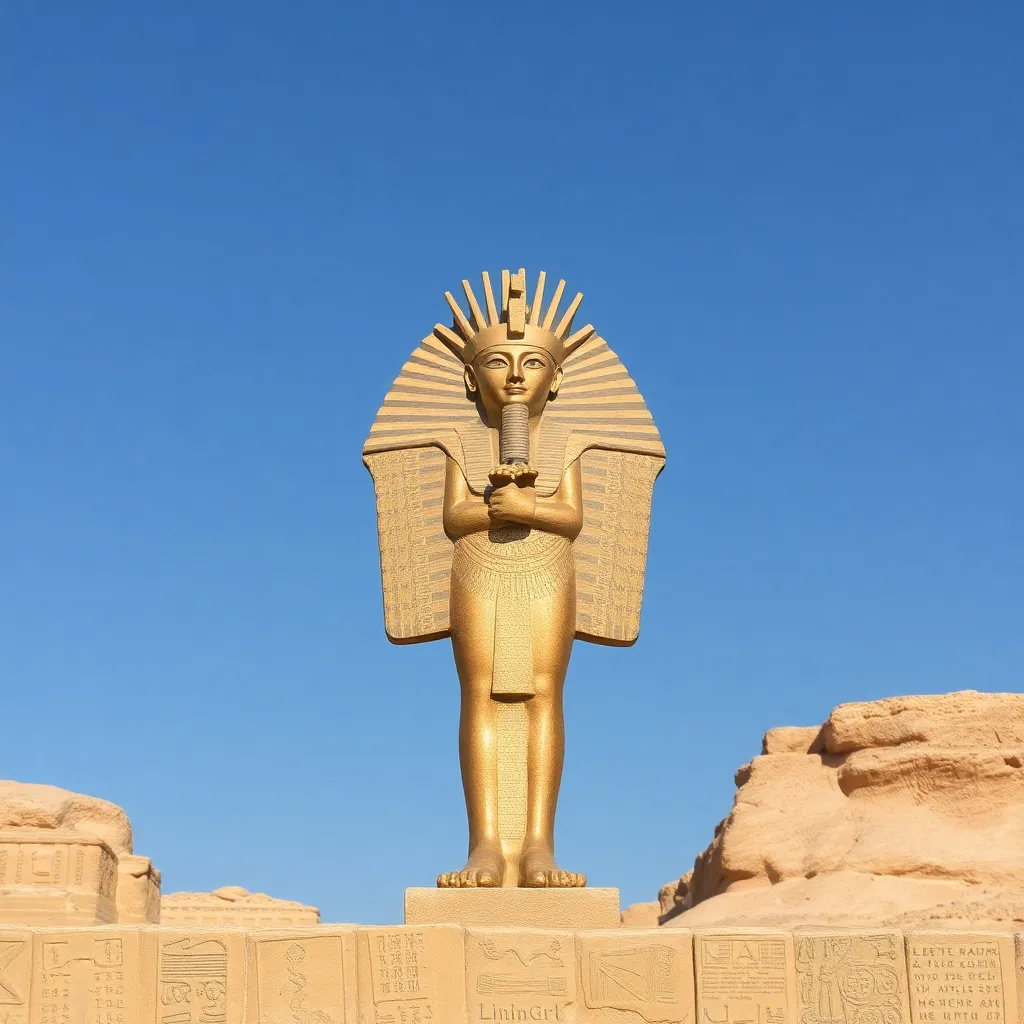The Aten in Historical Texts: Evidence of Worship
I. Introduction
The Aten, often represented as a sun disk, emerged as a significant deity in ancient Egyptian religion, particularly during the reign of Akhenaten. Unlike the traditional pantheon of Egyptian gods, the Aten represented a more singular focus on the sun’s life-giving power. This article explores the historical texts that provide insight into the worship of the Aten, emphasizing the importance of these texts in understanding the religious landscape of ancient Egypt.
By examining the Aten’s origins, its elevation during the Amarna Period, and the key texts and inscriptions that document its worship, we can gain a clearer picture of this unique phase in Egyptian spirituality. The purpose of this article is to delve into these historical contexts and examine their implications for our understanding of Aten worship.
II. Historical Context of Aten Worship
The origins of the Aten can be traced back to ancient Egyptian mythology, where it initially appeared as a part of the sun god Ra’s attributes. Over time, the Aten gained prominence, especially under Akhenaten, who sought to establish the Aten as the sole deity of Egypt. This marked a significant transition from the traditional polytheistic beliefs that had characterized Egyptian religion for centuries.
The Amarna Period, named after the city Akhetaten (modern-day Amarna) built by Akhenaten, is crucial in understanding this shift. During this time, the Aten was not just worshiped but was also elevated to a position of unprecedented singularity, leading to a form of monotheism that challenged the established religious order.
III. Key Texts and Inscriptions
Several key texts and inscriptions provide vital evidence of Aten worship, with the most notable being:
- The Great Hymn to the Aten: This poetic composition celebrates the Aten’s beauty and benevolence, portraying the sun god as the creator of life. Its themes reflect a personal and intimate relationship between the deity and humankind.
- Inscriptions from Akhenaten’s temples: Temples dedicated to the Aten, such as the one at Karnak, contain inscriptions that extol the virtues of the Aten, emphasizing the exclusivity of its worship.
- Other references: Various artifacts, including stelae and pottery, feature inscriptions that reference the Aten, showcasing its importance in daily life and state affairs.
IV. The Role of Akhenaten in Aten Worship
Akhenaten’s reign was pivotal in the development of Aten worship. His personal devotion to the Aten was not merely political but deeply spiritual. He promoted the Aten as the central figure in Egyptian religion, establishing a new order that sought to diminish the power of the priesthood associated with traditional gods.
One of Akhenaten’s significant contributions was the establishment of Akhetaten (Amarna) as a center for the worship of the Aten. This city served as a religious capital and housed temples dedicated to the Aten, where rituals and ceremonies were conducted.
The impact of Akhenaten’s reign on religious practices was profound, leading to a radical transformation in the way the ancient Egyptians approached spirituality and worship.
V. Artistic Representations of the Aten
The Aten’s representation in art and iconography is distinct and significant. Artistic depictions often show the Aten as a sun disk with rays extending towards the earth, symbolizing its life-giving properties. Unlike traditional deities, the Aten was frequently represented without human forms, emphasizing its abstract nature.
The use of solar imagery was central to Aten worship, with artists employing vibrant colors and dynamic forms to convey the power of the sun. During the Amarna Period, artistic styles underwent notable changes, characterized by:
- Naturalism and realism in human figures
- Increased emphasis on family and domestic scenes
- Innovative compositions that broke away from traditional rigid forms
VI. Comparative Analysis with Other Deities
In comparing the Aten with other solar deities such as Ra, we observe both similarities and differences in worship practices. While both Ra and the Aten are associated with the sun, the Aten’s worship was marked by a more personal and immediate relationship between the deity and the worshippers.
Key differences include:
- The Aten was worshiped primarily as a singular entity, whereas Ra was part of a larger pantheon.
- Ritual practices for the Aten focused more on the sun’s daily cycle rather than elaborate mythological narratives commonly associated with Ra.
The influence of Aten worship extended beyond Akhenaten’s reign, impacting later religious movements and concepts of divinity in ancient Egyptian culture.
VII. Decline of Aten Worship
After Akhenaten’s death, several factors contributed to the decline of Aten worship. The return to traditional polytheistic practices was swift, as subsequent rulers sought to restore the previously established religious order. The political and social upheaval that accompanied Akhenaten’s radical reforms alienated many sections of society, leading to a rejection of his religious innovations.
Historical interpretations suggest that the Aten’s legacy, while diminished, left a lasting impact on Egyptian religion and the concept of monotheism, influencing later religious thought in the region.
VIII. Conclusion
In summary, the historical texts surrounding Aten worship provide a rich tapestry of evidence regarding one of ancient Egypt’s most unique religious movements. The analysis of these texts reveals not only the importance of the Aten in the context of Akhenaten’s reign but also the broader implications for understanding the dynamics of ancient Egyptian religion.
Reflecting on the significance of the Aten, we see a complex interplay between power, spirituality, and societal change that shaped the religious landscape of ancient Egypt. Future research may further illuminate the nuances of Aten worship and its enduring legacy in the annals of history.




